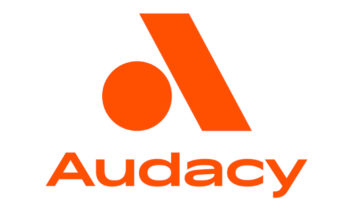Field Report: AirTools Multiband Processor 2m
Nov 1, 2010 11:50 AM, By Jeff Smith, CSRE CBNT

There are lots of situations in a radio station where we could use some help with audio. Maybe it”s with the phones, the stream or the headphone processing.
We had such an issue here with the way our callers sounded. With people calling in on bad cell connections, VoIP connections and just plain old noisy landlines it became very clear that we needed to do something to not only boost the audio level but also help clean it up.
Right about that time our local SBE chapter, SBE 15, was having a meeting to talk about utility processors. One of the units demoed was the AirTools Multiband Processor 2m. After seeing the demo, I decided this unit was worth a try.
The 2m arrived and it installed very quickly. Our facility is mostly AES, so I liked the fact that the 2m had both AES and analog inputs and outputs. I ran into a minor issue at this point; turns out the AES input did not work. I called Symetrix/AirTools support and immediately got a technician on the phone. After some troubleshooting we determined there was an issue with this unit. The tech arranged for a new unit to be sent priority overnight to me and it arrived the next morning. This one installed with zero issues. It syncs nicely to our house sync and installs very quickly. I installed it in the air studio of one of our stations and ran the phone caller audio through it. I then hooked it to our network so I could control it from anywhere. Again, this all went very quickly and was up and running on the network in about 15 minutes.
AirToolsP
W
E 425-778-7728
airtoolsaudio.com
[email protected]
The AirTools 2m is pretty basic on the back. It has an AES input/output, as well as stereo analog inputs and outputs. Also on the back of the unit is a BNC connector for word clock, an Ethernet RJ-45 plug, and a remote/ RS-485 connection. I did not use the remote/RS-485 connection. The front of the unit has meters for the input and output levels, a small display to show presets and some basic configurations. Also on the front of the unity are indicators for power, network and a remote connection. There is also an RJ-45 on the front that AirTools places a label over, as it is not a network connection but a remote connection.
The 2m has a software utility that will auto-detect any units on the network. You can also enter a specific address. The utility allows full control over the 2m and is much easier to use than the very simple front panel on the processor. Once connected to the unit the options seem endless. I found it easiest to start with one of the 17 presets that come already installed and up to 50 presets total can be stored on the processor. These presets seemed to all sound good but with a little help can sound very good. Also, simple to configure from the software is weather the box is AES or analog, the sync source and many audio parameters. The 2m allows control of filters, AGC, EQ, compression, limiting and more.
The AirTools 2m at its core is a DSP-driven, four-band processor. It responded very well for me with all sorts of input levels, I did notice, however, that if I drove the AES input very hard I could create distortion before the processor tried to fix it, resulting in something that did not sound that great. This was only a test though and in the real-world conditions in the studio the unit preformed very well.
Performance at a glanceAnalog and digital I/O
Word clock input
User configurable audio input failover
Stereo/mono/MS encode/MS decode operating modes
Multiple processing modules included
Up to 50 saved presets
Windows control software
Daypart processing scheduler
The unit is capable, as I said before, of both analog and AES audio. The analog inputs and outputs can be set as mic or line level and seem to have plenty of head room. Once the audio is in the processor it is converted to AES, if it”s not already. The A/D D/A is 24-bit and does not degrade the audio at all. The A/D D/A also does not introduce any noticeable delay to the audio. The unit has a very low distortion and noise floor of about -100dB. According to AirTools it also has a dynamic range of 114dB (A-weighed), I however go nowhere near needing this much range for phone calls, so I will take their word for it.
Overall I feel the AirTools 2m multiband processor greatly helped the audio quality of our callers. It helped clean up noisy calls and helped keep a consistent level between callers. Any issues I had were dealt with very quickly by AirTools support team. I would recommend the AirTools 2m processor to anyone needing an affordable solution to an audio problem.
Smith is the supervisor studio systems, Clear Channel Radio-New York.
Editor’s note: Field Reports are an exclusive Radio magazine feature for radio broadcasters. Each report is prepared by well-qualified staff at a radio station, production facility or consulting company.
These reports are performed by the industry, for the industry. Manufacturer support is limited to providing loan equipment and to aiding the author if requested.
It is the responsibility of Radio magazine to publish the results of any device tested, positive or negative. No report should be considered an endorsement or disapproval by Radio magazine.
November 2010
Choosing a computer audio interface, a tour of the CBC/Radio-Canada’s upgrade, multimedia for digital radio, calculating STL fade margin and more….












